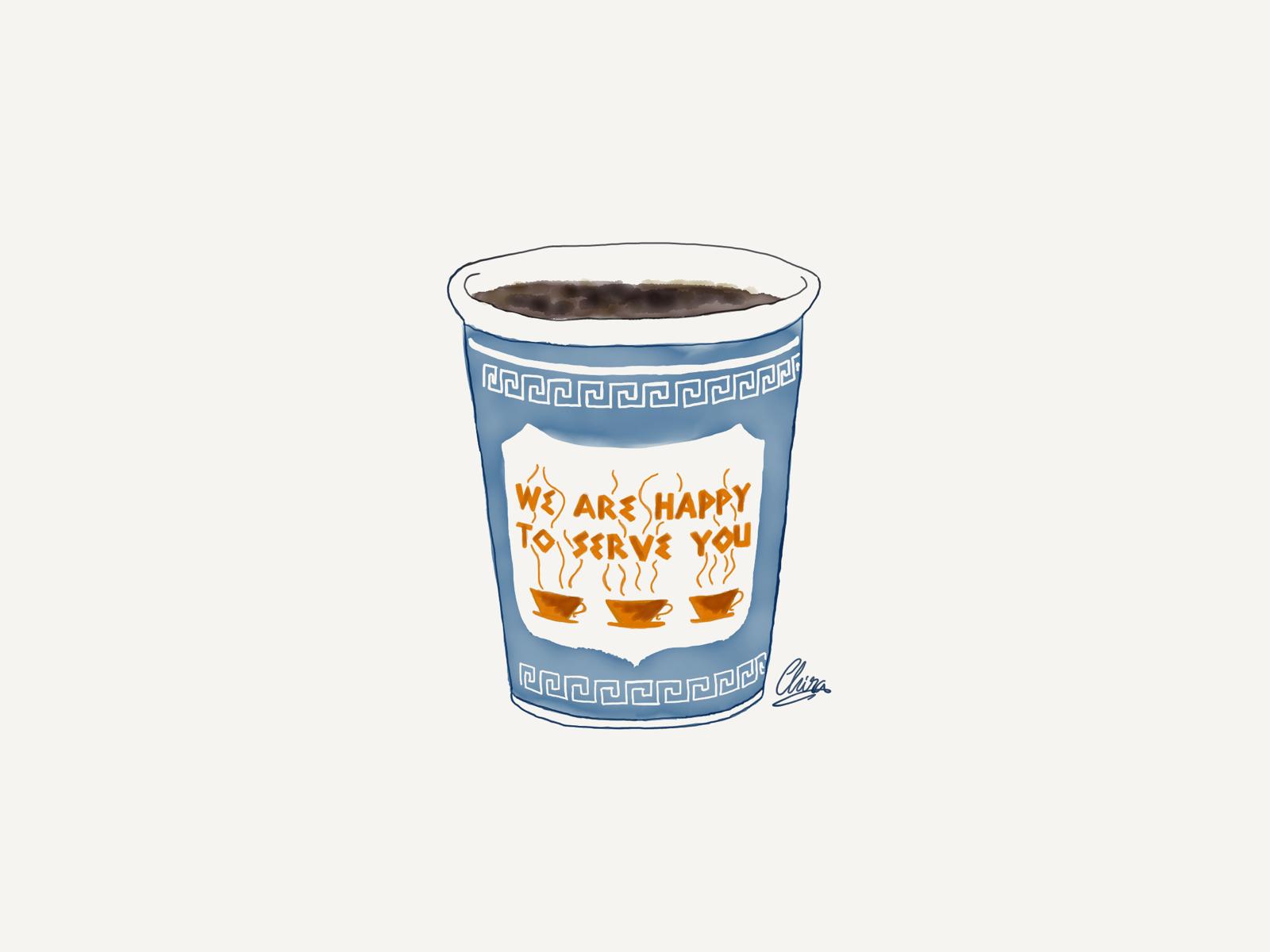By Ayse Mısırlıoğlu
A couple of years back, I started noticing a curious pattern in several of the New York-based TV series or movies that I was watching. Whenever certain characters had a cup of coffee in their hands, it was always the same cup of coffee. I could see it in 27 Dresses, Mad Men, Brooklyn 99, Law & Order, Friends, How I Met Your Mother, The Wolf of Wall Street and many others. At first, I made an educated guess that it is probably a common prop that productions with a common studio or production company share. It turns out, however, that this is not the case.
This cup, the Anthora, is a salute to the history of New York City.
The History of Anthora
The Anthora cup was first designed by Leslie Buck, a Czech-American immigrant and a survivor of the Holocaust. Upon seeking refuge in New York, Buck started working as a sales manager for Sherri Cup Company. Being an immigrant himself, he quickly noticed the colorful mix of cultures in the city and there was one nationality that especially drew his attention: the Greeks. Indeed, by the mid-1900’s, a significant Greek community had developed in New York along with some U.S states like Louisiana. Even though we now easily associate to-go cups of coffee with the fast-paced lives led by New Yorkers, the coffee culture in pre-Greek immigration New York was hardly soaring. Early-1960’s witnessed a dramatic rise in the number of diners, delis and “side-walk pushcarts” owned by Greek people, who introduced their coffee culture to the people.
As Leslie Buck set out to design a cup that would appeal to this body of Greek vendors and consumers in 1963, he produced what is now seen as a symbol of New York City. The cup, as you can see in the image above, featured elements that would have been familiar to this audience as allusions to Ancient Greek culture staples. The interlaced square pattern just below the rim, meander, symbolizing the Greek idea of eternal life and youth; the Roman/Greek font type showcasing the Greek letters sigma and epsilon, the classic blue and white colors… The name Anthora itself was a play on amphora, a two-handled pitcher from Ancient Greece, which is also pictured on the cup. It is simple to understand why and how this design tapped into something incredible within the Greek consumer and later all New Yorkers.
Following the years 1970 to 1990, sales of the Anthora cup skyrocketed: in 1994, up to 500 million were sold to business-owners and consumers were estimated to use as many as 15 million cups in a single month. The New York Times even called it “the most successful cup in history” in 1995. Mr. Buck, who retired in 1992 during the prime times of his design, was gifted with 10,000 Anthoras with specially crafted messages. Upon his death he was commemorated by another New York Times article praising his initial message in the cup design, “We Are Happy To Serve You”, for its “tenderness, succor and humility.”
Days of Decline
As all good things eventually come to an end, the Anthora too experienced a decline in popularity around the 2000’s due to several reasons. New immigrants from Korea, African countries, Italy and more started to open their own businesses and introduce their cultures as Greek immigrants increasingly moved towards the suburbs. Furthermore, Starbucks made its debut in New York city as of 1994, beginning its consistent rise. In 2005, when the Solo Cup company bought Sherri, they recognized these factors’ influence on the sales of Anthora, and decided to discontinue its production. However, the design did not stop being associated closely with New York and thus in 2003, MoMA came out with a ceramic version of the cup and started selling it.
“An Endangered Artifact”
Many artists and designers since then have been creating imitations that closely resemble the original Anthora, even though none of them come quite close to the real deal. In an effort to spark the same legendary revenue made by the original cup, some companies have even licensed these imitations and started mass-production. The NY Times conducted an entire interview with a sculptor who was collecting these, claiming he viewed them as an “art form that is tattooed to the body of New York”. Today, the original cup is honored in many shows and movies set in New York, to tap into a shared knowledge of history in a city known for constant shift, where even a cup can have its moment under the spotlight.
Sources
https://www.myrecipes.com/extracrispy/why-the-anthora-coffee-cup-is-part-of-new-yorks-magic
https://en.wikipedia.org/wiki/Anthora
Edited by Zuzanna Mietlinska
Artwork by Chira Tudoran

